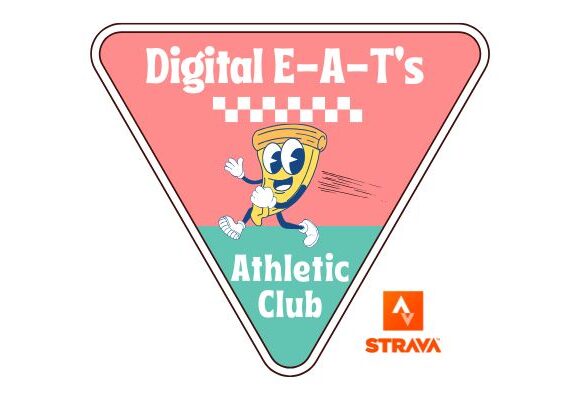Communication Breakdown: Solving Communication’s Biggest Issues
- Written By - Jamar Ramos
- Content Process
- August 30, 2024
Miscommunication is costing your business:
- A 2021 Gallup survey said only “7% of U.S. workers strongly agree that communication is accurate, timely, and open where they work.”
- A 2023 Forbes survey said, “[p]oor communication…impacted productivity for 49% of respondents. Nearly 50% of respondents reported that ineffective communication impacted job satisfaction while 42% said it affected stress levels.”
- A 2022 State of Business Communication report said, “[b]usiness leaders estimate their teams lose 7.47 hours per week due to poor communication.” The report also asked business leaders to estimate how much miscommunication costs in lost business revenue:
- 86% value the business lost to be $10,000 or higher
- 60% value the business lost to be $20,000 or higher
- 22% value the business lost to be $50,000 or higher
Miscommunication impacts trust, efficiency, and revenue. Why are we so bad at it if communication is essential and poor communication so costly?
There are two significant issues in how we communicate:
- We’re well-trained in linear communication models, which are great for talking to an audience but aren’t great for communication.
- Communication noise often gets in the way of our message, and we’re bad at fighting through communication noise.
Solving these issues will help alleviate most miscommunication. How will we solve them?
Here’s the TL;DR:
- Issue #1 – Linear Communication Models
- Solution #1 – Interactive Communication Models
- Why Interactive Communication
- How to Implement Interactive Communication
- Issue #2 – Communication Noise
- How to Combat Communication Noise
- Conclusion
Let’s start by looking at linear communication models.
Issue #1 – Linear Communication Models
“The single biggest problem with communication is the illusion that it has taken place.” – George Bernard Shaw.
Communication is the process of exchanging ideas, news, or information.
Emphasis on process. If I’m just moving my lips to make a sound, followed by you moving your lips to make a sound, we’re not communicating. We’re just talking to fill space, not to exchange ideas, news, or information.
Aristotle created the first visualization of the communication process.
Aristotle’s Model
In his work Rhetoric, Aristotle created the rhetorical triangle, the first communication model. It focused on three areas: the Speaker (Ethos), the Message (Logos), and the Audience (Pathos).
It looks something like this:

Aristotle’s rhetorical model is simple. It’s elegant. It’s also linear because it’s focused on persuasion.
The model asks that the speaker learn about the audience to persuade them to take an action, preferably the one the speaker suggests. Caesar would benefit from following this model when speaking to the Senate. Jake Brigance probably studied it before his closing argument in John Grisham’s A Time To Kill.
If you haven’t heard of Aristotle’s model, you may be more familiar with an updated, modern version.
David Berlo’s Model
In 1960, David Berlo published The Process of Communication, a book updating Aristotle’s rhetorical model. It was also very linear but introduced several new aspects.
Here’s a visualization of Berlo’s communication model:

You can see the difference. Source, Message, Channel, and Receiver replaced Speaker, Message, and Audience.
What are the differences in the terms? Let’s break it down.
Source
The source is the person or object sharing an idea, news, or knowledge with someone or something else.
Message
When the source shares an idea, news, or knowledge, they deliver a message. There are several components to a message:
- Content – The words used to convey the message.
- Elements – These include language, gestures, body language, etc, that go into conveying a message. Some elements always accompany the content.
- Treatment – The way the source treats the message. They have to be aware of the importance of the message so that they can convey it appropriately.
- Structure – The source has to properly structure the message to ensure the receiver will understand it correctly.
- Code – All verbal and nonverbal elements must be accurate if you want your message to be clear and understood.
Channel
Messages must pass through a channel from the sender to the receiver. In Berlo’s model, the channels are our five senses.
- Hearing: Orally transmitted messages, interpersonal communication
- Seeing: Watching television, a movie, live sports, a concert
- Touching: Hugging our loved ones, shaking hands
- Smelling: Perfumes, food, flowers
- Tasting: Eating, drinking
Receiver
The receiver is the message’s person, people, or final destination.
Berlo’s model, however, has a huge problem: it keeps communication linear like Aristotle’s. Communication isn’t linear, though. It involves feedback from the receiver and needs to be interactive.
We must understand interactive communication models to improve our ability to communicate with an audience.
Solution – Interactive Communication Models
Interactive communication is the only way to have meaningful conversations because it includes a feedback loop. Unlike linear communication models, feedback loops allow for a two-way exchange of information, ensuring all parties are on the same page and reducing the risk of misunderstandings or misinterpretations.
Let’s look at my favorite interactive model: the Osgood-Schramm model.
Osgood-Schramm
This model was introduced by Charles Egerton Osgood and Wilbur Schramm in the 1950s, predating Berlo’s model. Osgood-Schramm is one of the first communication models to include a feedback loop. It ditched the idea that communication is unidirectional and added that the person receiving the message also delivers a message in return. This model is particularly relevant in business communication as it emphasizes the importance of feedback, making the communication process more interactive and effective.
Here’s a visualization of the Osgood-Schramm model. This model can be applied in various business scenarios, such as team meetings, client interactions, or employee feedback sessions, where the feedback loop is crucial for effective communication.

Let’s take a look at what each term means:
Encoder
The person who originates the message converts thoughts into communicable forms (words, gestures, etc.) and sends them to the receiver.
Message
The content or information communicated from the encoder to the decoder. The same as in Berlo’s model.
Decoder
The person who receives the message and interprets or decodes it to understand the meaning intended by the encoder.
Interpreter
This role can be seen as part of both encoding and decoding processes. It involves understanding or making sense of the message. In reality, every communicator simultaneously interprets, encodes, and decodes messages. The interpreter in the Osgood-Schramm model plays a crucial role in ensuring that the message is correctly understood and interpreted, thereby contributing to the effectiveness of the communication process.
Feedback
In this model, feedback is crucial and emphasizes that communication is not one-way but a two-way process. After decoding the message, the receiver provides feedback by responding, which the original sender then interprets.
Communication is an ongoing loop in which each person’s response (feedback) becomes the next person’s message. The model highlights that communication is about transmitting information and understanding and interpreting the message correctly. It’s a process that requires active engagement.
Introducing this feedback loop can make running your business easier and more efficient. This shift towards interactive communication can lead to potential improvements in your business operations, offering a hopeful outlook for the future.
Why Interactive Communication is Important
As the introduction mentions, clear communication is not just a necessity; it’s a revenue booster. It increases employee happiness, internal and external trust, and, most importantly, your bottom line.
Increase Revenue
Better communication will make you money. Lost time is lost revenue, and if “[b]usiness leaders estimate their teams lose 7.47 hours per week due to poor communication,” that’s ~30 hours each month we, our coworkers, and our bosses spend clarifying emails, Slack/Skype/Teams messages, verbal requests, etc.
That’s a lot of money lost to inefficiency. Can you afford to lose that much annual new business? Probably not.
Can you afford to lose employees? That’s another reason to improve communications.
Improve Employee Happiness
Better communication will improve employee happiness.
The 2023 Forbes survey said, “Nearly 50% of respondents reported that ineffective communication impacted job satisfaction while 42% said it affected stress levels.”
An unhappy or stressed employee isn’t very productive. That same Forbes survey said, “[p]oor communication…impacted productivity for 49% of respondents.”
Improve Trust
Better communication will improve trust.
The 2021 Gallup survey said only “7% of U.S. workers strongly agree that communication is accurate, timely, and open where they work.” Most workers are under the impression that their companies miscommunicate, aren’t proactive in their communication, and aren’t open.
There are many ways to breed mistrust. Businesses can’t tell employees everything, but we can be open, honest, and proactive in many areas. Working on improving interactive communication will help with that. Listening to your employees and where they feel company communication is lacking will help you work on those areas.
Improving communication will improve trust.
I made all that sound easy, right? Now, you’re ready to implement interactive feedback in your company.
How to Implement Interactive Communication in Your Business
Now comes the difficult portion: implementing the above ideas into your business. But don’t worry—here are some things you can do to facilitate the transition from linear to interactive communications.
Create Communication Norms
Proper communication needs rules, or else people will be trampled upon. Communication isn’t fully interactive unless everyone feels comfortable speaking, providing, and receiving feedback. Creating communication norms is a great way to even the playing field so that your more introverted employees and coworkers are comfortable in the new system.
Focus on Feedback Loops
Implement regular feedback mechanisms like surveys, suggestion boxes, or town hall meetings to ensure employees feel heard and valued.
Train Your Team
Train your customer service team on effectively communicating with customers using interactive tools, focusing on empathy, active listening, and problem-solving. Ensure your team is comfortable using the communication technologies you’ve implemented. Provide regular training sessions and updates as needed, especially if communication is negatively impacted.
Continuously Monitor and Optimize
Use analytics tools to track the effectiveness of your interactive communication strategies. Monitor response times, customer satisfaction rates, and engagement metrics. Regularly review your communication processes and adjust based on feedback and performance data. Use Customer Relationship Management (CRM) systems to track and manage customer interactions, ensuring personalized and timely communication.
As you do all this, you should be aware of one problem: communication noise.
Issue #2 – Communication Noise
No matter how good your communication is, a bit of noise always interferes with the message.
Noise interferes with communication by hindering the sender’s message to the receiver.

Many types of noise can cause this. Let’s examine them.
Types of communication noise
Physical
Physical noise is any disturbance or interference coming from an external source. This type of noise can include audible and non-audible distractions like:
- A crying baby
- A loud car
- Someone waving on the periphery of your vision
Physiological
Physiological noise is any physiological issue or health state that interferes with one’s ability to pay attention to the message being communicated. Examples include:
- The sender mumbling
- The sender speaking too quickly
- Being too hungry or too tired to pay attention
Psychological
Psychological noise is the preconceived ideas that can prevent a receiver from focusing on the sender’s message. Examples include:
- Wandering thoughts
- Preconceived notions about the topic
- Stereotypes either about the sender or their message
- Biases
Semantic
Semantic noise happens when the meaning of a message becomes distorted or obscured by differences in the understanding, interpretation, or perception of the language or symbols used between the sender and the receiver. Examples include:
- Using jargon the receiver doesn’t understand
- Using a word or words that have multiple meanings
- Using body language that doesn’t match the message
Cultural
Cultural noise occurs when cultural expectations, etiquette, attitudes, and values differ. Many cultures exist based on nationalities, ages, genders, regions, social positions, work groups, and more, and individuals belong to multiple cultures. Example include:
- Language differences
- Relationship with time
Technical
Technical equipment issues can interfere with your audience receiving and understanding your message. Examples include:
- Video conferencing equipment doesn’t work
- Cell phone service drops
- Internet service is down
Organizational
Organizational noise can occur if you are unaware of or disregard expected communication channels in your organization. Examples include:
- Superfluous meetings
- Company politics
- Constantly shifting priorities
There are ways you can combat communication noise.
How to Combat Communication Noise
Now that we’ve discussed how communication noise can interfere, understanding and addressing these barriers can enhance communication skills and foster more meaningful and productive exchanges.
Here are some ways you can fight different communication noise.
Physical Noise
- Control the Environment: When you can, keep your physical environment quiet and free from distractions during communication.
- Reduce Digital Distractions: If you’re communicating digitally, minimize background noise or visual distractions (e.g., mute notifications, turn off irrelevant screens, blur your background).
Physiological Noise
- Be Clear and Concise: Use simple and direct language. Avoid jargon or complex terms unless the audience is intimately familiar with them.
- Repetition: Repeat critical points during communication. Although it may seem repetitive, it helps ensure the message is understood.
- Feedback: Encourage questions and/or feedback to ensure the message is correctly understood.
- Select Appropriate Channels: Based on the message and the audience, use the most effective communication medium (e.g., email, face-to-face, phone call).
- Body Language: Match your body language and facial expressions to your verbal message.
- Tone of Voice: Use an appropriate tone to convey the message’s intent.
Psychological Noise
- Build Trust: Establish trust and rapport with the audience to reduce skepticism or bias.
- Empathy: Understand the audience’s perspective and emotions to tailor the message accordingly.
Semantic Noise
- Avoid Ambiguity: Use precise language and define any complex terms.
- Context: Provide sufficient context to avoid misunderstandings.
Cultural Noise
- Educate Yourself: Learn about the cultures you are interacting with. Understanding cultural norms, values, and communication styles can help prevent misunderstandings.
- Recognize Cultural Differences: Be aware of how other cultures interpret things like body language, tone, and context.
- Use Simple Language: Avoid jargon, idioms, and slang that may not translate well across cultures.
- Be Explicit: Provide clear and direct instructions or information, as implicit meanings may not be understood the same way across cultures.
- Adjust Non-Verbal Cues: Be mindful of gestures, eye contact, and personal space, which can vary significantly between cultures.
- Bring in a Cultural Mediator: In situations where communication is particularly challenging, a mediator who understands both cultures can help bridge the gap.
- Use Professional Interpreters: For critical communications, consider using interpreters to ensure accuracy.
Technical Noise
- Use High-Quality Devices: Invest in reliable communication devices (microphones, speakers, cameras) to minimize issues.
- Regular Maintenance: Regularly check and maintain your equipment to ensure it’s functioning correctly.
- Update Software: Keep all communication software current to avoid glitches and compatibility issues.
- Perform Test Runs: Before critical communications, test all equipment to ensure it’s working correctly.
- Check Connections: Make sure all cables and connections are secure and functioning.
- Have Backup Options: Have a backup plan, such as an alternative communication platform or device, in case of technical failure.
- Record Sessions: For critical communications, consider recording the session so it can be reviewed later if something is missed due to technical noise.
- Speak Clearly and Slowly: Enunciate your words and speak moderately to ensure clarity, especially if the connection isn’t perfect.
- Use Visual Aids: Incorporate visual aids (slides, diagrams) to reinforce your message and compensate for audio issues.
Organizational Noise
- Define Clear Roles: Ensure everyone understands their roles and responsibilities to prevent confusion and overlapping duties.
- Establish Communication Protocols: Set clear guidelines on who communicates with whom and through which channels.
- Reduce Redundancies: Avoid unnecessary communication layers by simplifying the hierarchy or removing redundant steps in the communication process.
- Use Direct Channels: Encourage direct communication between relevant parties rather than relying on intermediaries, which can distort the message.
- Promote Open Communication: Foster an environment where open communication is encouraged, and information is shared freely across departments.
- Provide Access to Information: Ensure all employees can access the information they need to perform their jobs effectively.
- Simplify Bureaucratic Processes: Identify and reduce unnecessary bureaucratic procedures that hinder communication.
- Empower Decision-Making: Decentralize decision-making where appropriate, allowing quicker and more effective communication and action.
Conclusion
Effective communication is the cornerstone of any successful business. In today’s dynamic work environment, shifting from a linear to an interactive communication model is necessary. Companies can improve trust, efficiency, and revenue by fostering open, two-way communication and addressing common noise-related obstacles.
Implementing these strategies requires effort and commitment, but the rewards—better employee satisfaction, stronger relationships, and enhanced productivity—are worth the investment. Clear, interactive communication is about avoiding misunderstandings and building a thriving, responsive business that can adapt and grow in a complex world.
Easy? Hell no. Worth it? Absolutely!
Written By

Jamar Ramos
Jamar Ramos is a multichannel digital marketer currently doing part time consulting for start ups. In this role I help new companies build a solid digital marketing foundation, then layer on multi-channel initiatives to add several touchpoints to their customer experience. I’ve been working in the field for eleven years.
Articles

5 Unpopular B2B SaaS Content Strategies That Drive More Product Signups
5 Unpopular B2B SaaS Content Strategies That Drive More Product Signups. Learn more from Deborah Damilola!

Hey SEO’s — Everybody Love Everybody
SEO’s and digital marketers need to build each other up instead of breaking eachother down! The purpose of Digital E-A-T’s!

Stress and Stressability Working on Emotional Regulation
Emotional regulation issues start with emotional triggers. Let’s dig into some of the emotional triggers we encounter in digital marketing.

Working Toward Alignment
Successful communication occurs when there’s an authentic connection between the speaker and the audience. This phenomenon, known as neural entrainment, is challenging to achieve.

Millennium Man: What Chris Jericho’s WWE Debut Teaches Us About Marketing
Let’s look at how WWE’s marketing machine went into overdrive for Chris Jericho.

